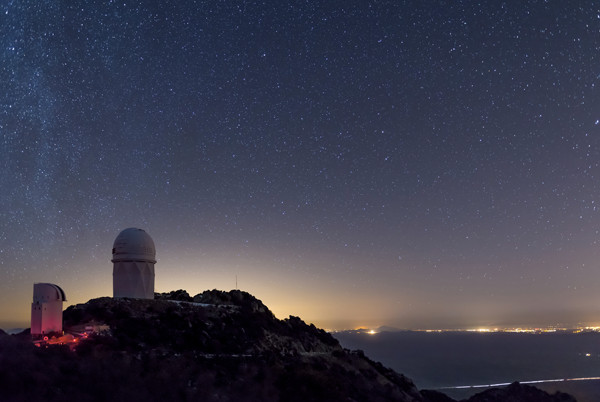
by Terri Cook Tuesday, September 2, 2014

The lights of Tucson are visible from the observatory at Kitt Peak. Credit: ©Shutterstock.com/John A. Davis.
Thanks to its dry climate and soaring peaks, the Tucson region offers some of the best night-sky viewing in the world. Perched high in the Baboquivari Mountains, on the Tohono O’odham Reservation about 90 kilometers southwest of Tucson, Kitt Peak National Observatory hosts the world’s largest collection of research telescopes. It is home to 24 optical scopes, including the world’s largest solar telescope, and two radio telescopes. Guided tours are offered three times a day, or you can pick up a map at the gift shop and visit three large telescopes on your own. From Sept. 1 through July 15, weather permitting, Kitt Peak also offers popular nightly observing programs by reservation only; see www.noao.edu/outreach/nop/ for details. Mount Graham International Observatory (http://mgio.arizona.edu) and Mount Lemmon SkyCenter (http://skycenter.arizona.edu/) also offer evening stargazing programs.
© 2008-2021. All rights reserved. Any copying, redistribution or retransmission of any of the contents of this service without the expressed written permission of the American Geosciences Institute is expressly prohibited. Click here for all copyright requests.